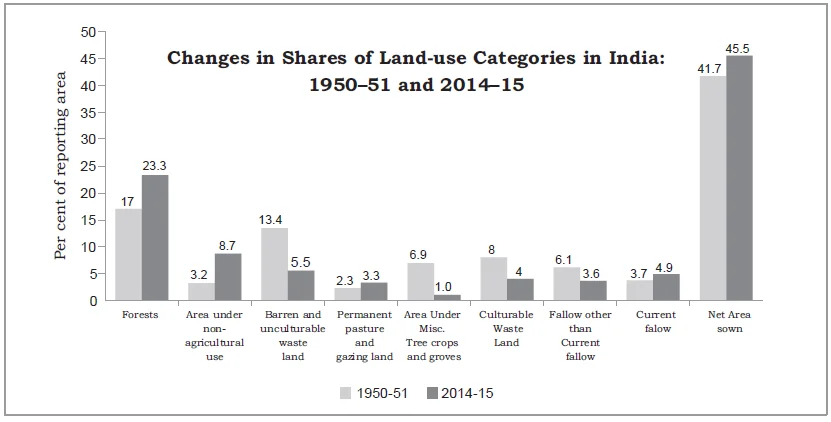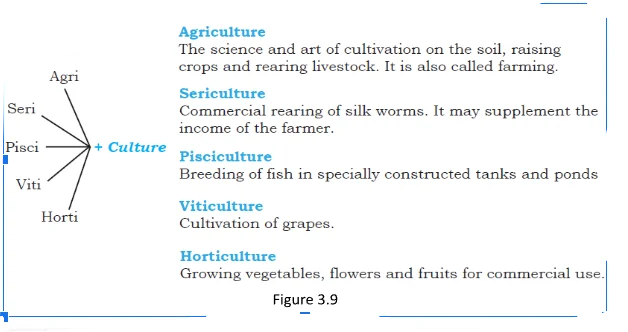![]() 7 Dec 2023
7 Dec 2023
Land is an important resource which is put for different uses. Efficient and sustainable utilization of land resources is essential to optimal growth.
Lets first delve into the study of land resources, classification of land and its changing nature in India.
Subsequently, analysis delves into the inter relationship between these land resources and agriculture with detailed study of Indian agriculture.
|
Word Origin: The word agriculture is derived from Latin words ager or agri meaning soil and culture meaning, cultivation. |
|---|

Land Use Categories in India
Land Use in a region is mainly influenced by economic activities and agricultural pressure.

Composition of Total Cultivable Land
Thus, land management in India has experienced widespread changes in the last few decades, mainly due to India’s rising population. Now let’s analyze the relationship between these land resources and agriculture in India.

Global Distribution of Arable Land
India’s Land Resources: A Comprehensive Exploration of Changes and Challenges

Also Read: Diverse Types of Agriculture: Understanding Forms and Practices Worldwide
<div class="new-fform">
</div>
